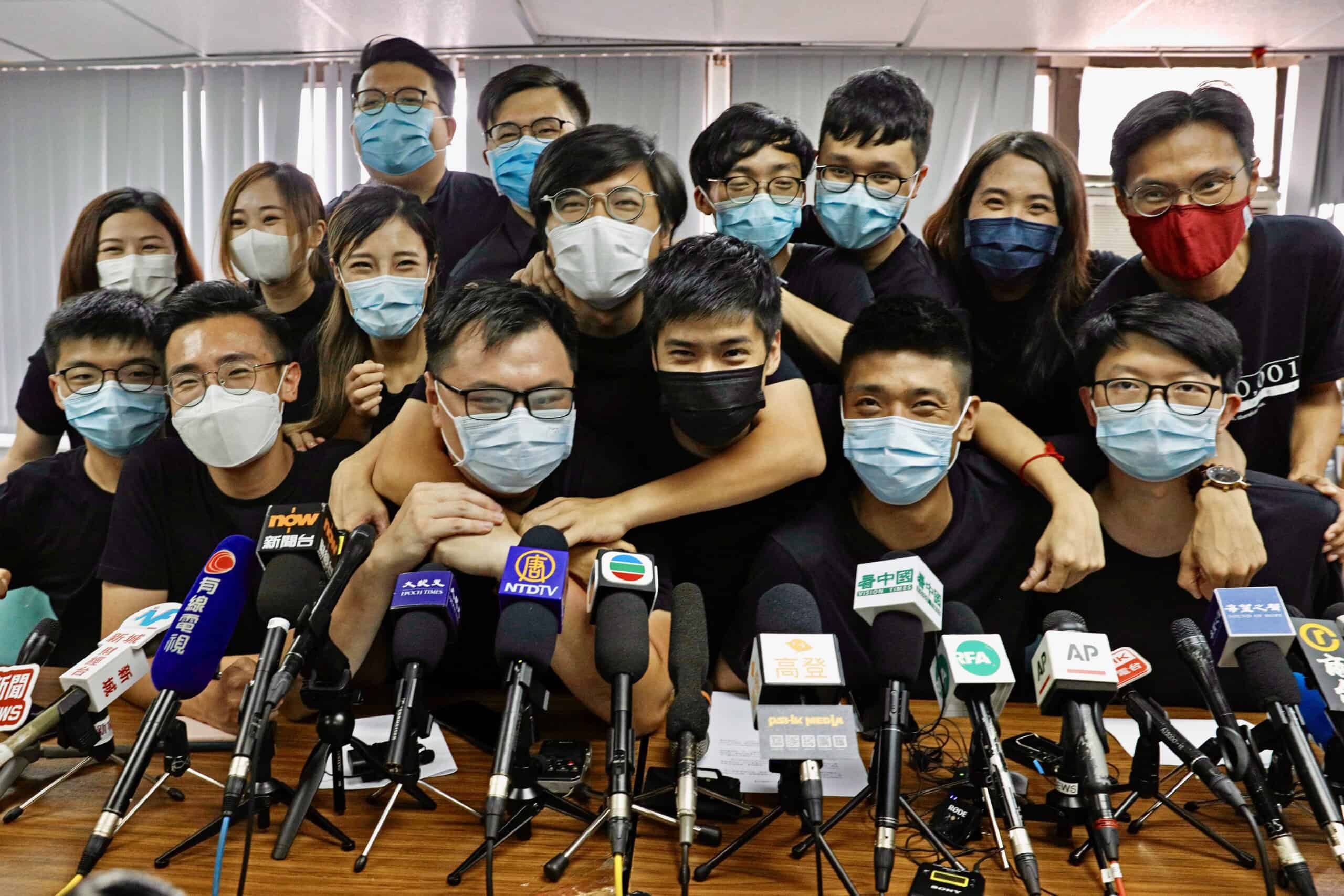
Last month, the 2023 World Robot Conference unfolded in Beijing, a spectacle that sparked global interest in recent technological advances in robotics. Over 100 enterprises bringing over 600 exhibits attended the conference, showcasing robot applications in the manufacturing, health, education, services, and medical sectors. A panorama of robotic marvels included humanoid bionic robots and quadrupeds, as well as robots for agricultural harvesting, industrial welding and surgery. Among the standout attractions were bionic robots with realistic skin, hair, eyes, and traditional outfits mimicking the revered eighth century Chinese poets Li Bai and Du Fu, representing a vivid mesh of tradition and technology. A wall of eerie robot heads suggested the capacity for modular production.
As China, the U.S., and the world stand on the brink of further transformations in bionic robotics, we are faced with the unprecedented task of guiding the future with foresight and prudence, so that technology augments, rather than diminishes humanity.

In fact, the fascination with creating lifelike machines is not a recent phenomenon. It is deeply ingrained in human history, and innovators have long pursued the enhancement of human capabilities through artificial means. In the eighteenth century, Swiss watchmaker Pierre Jaquet-Droz designed remarkable humanlike automata enabled by mechanical gears and levers. These intricate creations could write, paint, and even play the piano, dazzling royal families across Europe at the time.
The EX Future Science and Technology Museum in Shenyang, China, portrays the breathtaking strides made over time in bionic robotics that blur the boundary between reality and artificiality. Nestled amidst this futuristic space are dozens of bionic robots modeled after historical luminaries such as Albert Einstein, Pablo Picasso, Leonardo Da Vinci, Marie Curie, Lu Xun, and even Steve Jobs. This tapering of the boundaries between humans and robots is further intensified by the presence of human museum staff dressed to mimic robots. These scenes call to mind Tesla’s AI Day Event in 2021, when Elon Musk invited an actor dressed as a robot to perform breakdance as he discussed the company’s plans to develop humanoid robots.
BIONIC INNOVATIONS ACROSS THE WORLD

In recent years, several countries have joined the race to develop bionic robots. A significant contributor, the American company Boston Dynamics created the Atlas robot that can excel in emergency response. Hong Kong-based Hanson Robotics, founded by the roboticist David Hanson, designed the famous humanoid robot, Sophia. With a few other humanoid robots, Sophia recently graced the stage at the United Nations’ ‘AI for Good’ conference. Hanson Robotics’ miniature Einstein robot promises to revolutionize educational engagement, positioning itself as a friendly STEM education assistant for the younger generation. The U.K. company Engineered Arts has meanwhile introduced the Ameca robot, which is especially impressive for its wide-ranging facial expressions such as anger and regret. China also has channeled considerable resources and effort into R&D in robots across the manufacturing and service industries.
RISKS OF BIONIC ROBOTS
As we arrive at the threshold of this new world of robotics, it has become essential to assess the potential benefits and associated risks judiciously. The advantages are manifold, ranging from improvements in medical assistance to the physically challenged to new dimensions in educational experiences. However, the risks are equally paramount.
…collaborative efforts can help sculpt a future where technology and humanity can coexist harmoniously, fostering growth and understanding rather than isolation and apathy.
Bionic robots, if mass-produced, would have a vast impact on interpersonal communications, perhaps even greater than that of smartphones and social media. The surge in bionic robots threatens to form environments where direct human to human engagement becomes scarce. An increasing dependence on these robots could alter the fabric of human interaction. As humans become more accustomed to these artificial beings, there is a looming threat of an empathy deficit, where the nuances of human emotions and understanding would be overshadowed by algorithmic responses. It is not far-fetched to envision a society where humans find it more comfortable to interact with robots than with their own kind, resulting in increased loneliness and a significant reduction in the rich tapestry of human interaction and compassion.

Another glaring risk that cannot be overlooked is the manifestation of racial biases in the development and portrayal of bionic robots. It has already been observed that African Americans and Latin Americans are vastly underrepresented in the field. Furthermore, African innovators and tech companies venturing into the domain of humanoid robots find themselves grappling with significantly less representation and media coverage. For example, Uniccon Group, a Nigerian tech startup, has made great strides in this sphere with their development of the humanoid robot Omeife, yet has enjoyed scant representation in the global discourse. It is incumbent upon the global community to initiate dialogues that address these disparities, fostering a technological future that is inclusive and just.
CRAFTING POLICIES FOR A RESPONSIBLE FUTURE
To navigate this intricate landscape successfully, establishing robust regulatory policies is critical. Despite recent progress, such as the European Union’s development of a strategy to regulate foundation models and various AI applications, there has been little action to establish ethical standards and protocols for developing and deploying bionic robots.
In light of the quickly evolving iterations in humanoid robots, there is a pressing need to formulate comprehensive policies globally that can guide their production and deployment. These policies should prioritize safeguarding human interaction and empathy, while still encouraging the positive advances that these technologies can bring. Setting up barriers against the mass production of bionic robots can serve as a protective measure to preserve the intricate dynamics of human society.
As we forge ahead into this uncertain frontier, collaborative efforts can help sculpt a future where technology and humanity can coexist harmoniously, fostering growth and understanding rather than isolation and apathy.

Gerui Wang is a current visiting scholar at Stanford University’s Center for East Asian Studies, researching the intersections of art, public policy, technology and the environment. She is also Lecturer at the University of California, Santa Cruz and holds a Ph.D from the University of Michigan.



